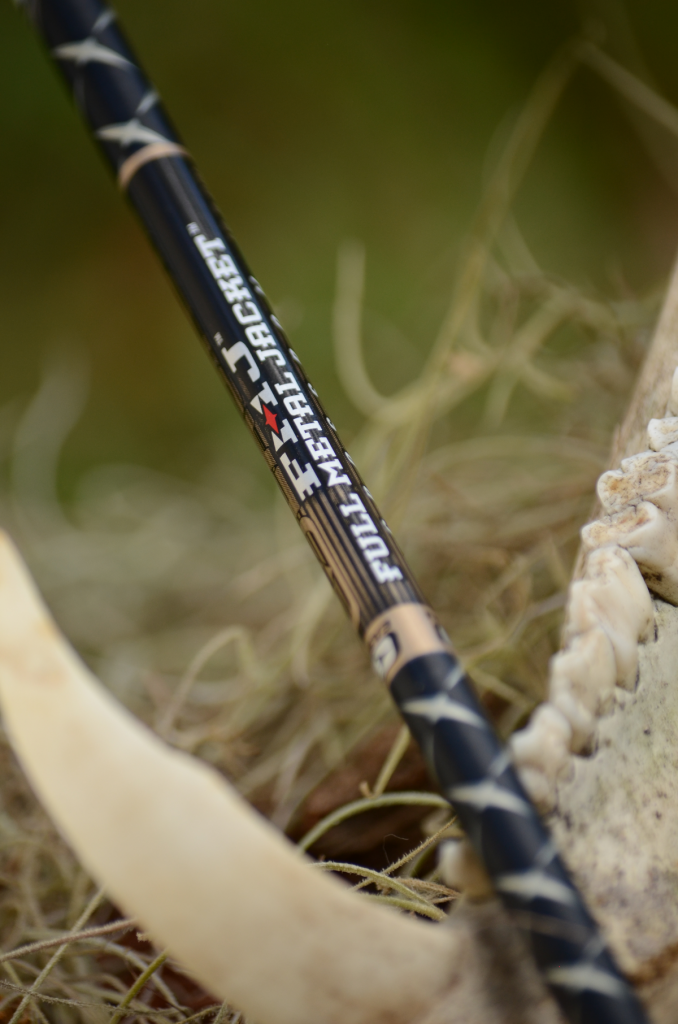I hunt heavy-boned big game on a regular basis, so I’m always looking for the strongest, deepest-penetrating arrow available. Moose, elk, black bear and even caribou can have rib bones as wide as the human wrist.
Nearly all crossbow manufacturers publish bolt recommendations, and most of those recommendations are centered on carbon arrows. Carbon is an extremely lightweight material that allows these fibrous bolts to fly fast. But carbon brings another attribute to the table as well — strength. A carbon bolt’s ability to flex and bend without breaking is incredible. I’ve collected many after harvesting an animal and reused them again.
Remember shooting aluminum arrows?
At one time, they were the best technology available to bowhunters, and many a deer fell victim to the precision of the alloy. I shot countless critters with aluminum arrows and bolts, but I could rarely reclaim my arrow and use it again. They broke easily or bent, making them unusable. Many were cut off for younger shooters or made into pens for hunting buddies. The rest became tomato stakes in the garden.
Related: Top 10 Crossbow Safety Tips

A hybrid-style bolt like the Easton Full Metal Jacket promises straight arrow flight and devastating penetration on heavy-boned game.
The Arrow’s Carbon Core Wears an Aluminum Jacket
Both carbon and aluminum have their virtues for archers and one of the latest innovations marries the two.
Easton Archery combines the qualities of carbon and aluminum with its Full Metal Jacket (FMJ) arrow. A carbon core provides strength without adding too much weight. It also provides the backbone we’ve all come to appreciate from carbon. A thin, aluminum jacket, however, infuses the qualities of the time-tested alloy to improve precision. The exterior jacket also adds just the right amount of extra weight to stabilize arrow flight. Bonded to the carbon core, the aluminum forms a single shaft that can be cut to length, like any other arrow. Inserts fit into the carbon core.
I tried the FMJ bolts for myself and found them to be extremely accurate at the range. The bolts were consistent and provided repeatable results at an array of distances. When I tried shooting through a strong crosswind, it became obvious the heavier FMJ wasn’t affected much, even at extended distances.
Field Test: Shooting the Full Metal Jacket Arrow
When I shot my first round of targets, I discovered advantages First, arrow removal from the target. I always add release fluid to the first four inches of any carbon arrow. If I don’t, the carbon often binds with foam targets, and the bolts become impossible to remove. Once I finally tug them out, I’m left with the chore of scraping the melted target scraps from my bolt. The first FMJ I pulled from the target almost sent me flying backward. I could pull the arrow with one hand and there was no target material on the smooth shaft.
Having an aluminum outer layer reduces friction. Whether you’re shooting a target or an animal, less arrow friction means better penetration. In fact, when the aluminum gets wet with blood, it becomes even more slippery, allowing it to penetrate tissue and muscle like a hot knife slicing through butter.
Better penetration often means exit wounds and better blood trails. Extra weight on the entire shaft means more kinetic energy downrange, made evident by how far my bolts sank into targets.
Another bonus: reduced noise from my crossbow. As Easton marketing manager Gary Cornum explained, “When you shoot a heavier arrow, it leaves less energy in the bow, making it quieter. Being able to quiet your crossbow is a benefit any hunter would want.”
- The FMJ Crossbow shafts are 22 inches long and weigh 13.7 GPI.
- The aluminum wrap is a 7075 alloy metal jacket with a straightness of +/- 0.003 inches.
- There are brass bolt inserts available to increase weight-forward qualities and enhance arrow flight.
Related: Advantages Of Modern Crossbow Technology
Calibrate your Scope
The FMJ is heavier than a standard carbon bolt, so you’ll want to shoot several bolts through a chronograph to calibrate your crossbow scope and determine actual speed. Most crossbow scopes have the speed settings on a dial to align hash marks or multi-reticles within the scope. When shooters look at a slightly slower bolt, they may confuse speed with downrange penetration. But the added weight is what makes the bolt more efficient downrange.
Cost
FMJ bolts will cost you a little more when compared to a solid carbon shaft, but the benefits could be worth their weight in venison.
Some hunters just want to maximize speed and carbon will always win that race. The downrange penetration and increased kinetic energy are values worth looking at when considering price and a hybrid arrow, rather than a solid aluminum one, offers the best of both worlds.
The first thing I shot with an FMJ was a quartering-away hog. My bolt pierced the boar and lodged in the far shoulder. It only ran 25 yards, and the lighted nock on the arrow helped me find my quarry in the thick cover. My arrow was still in perfect shape. It just needed a little cleaning.






